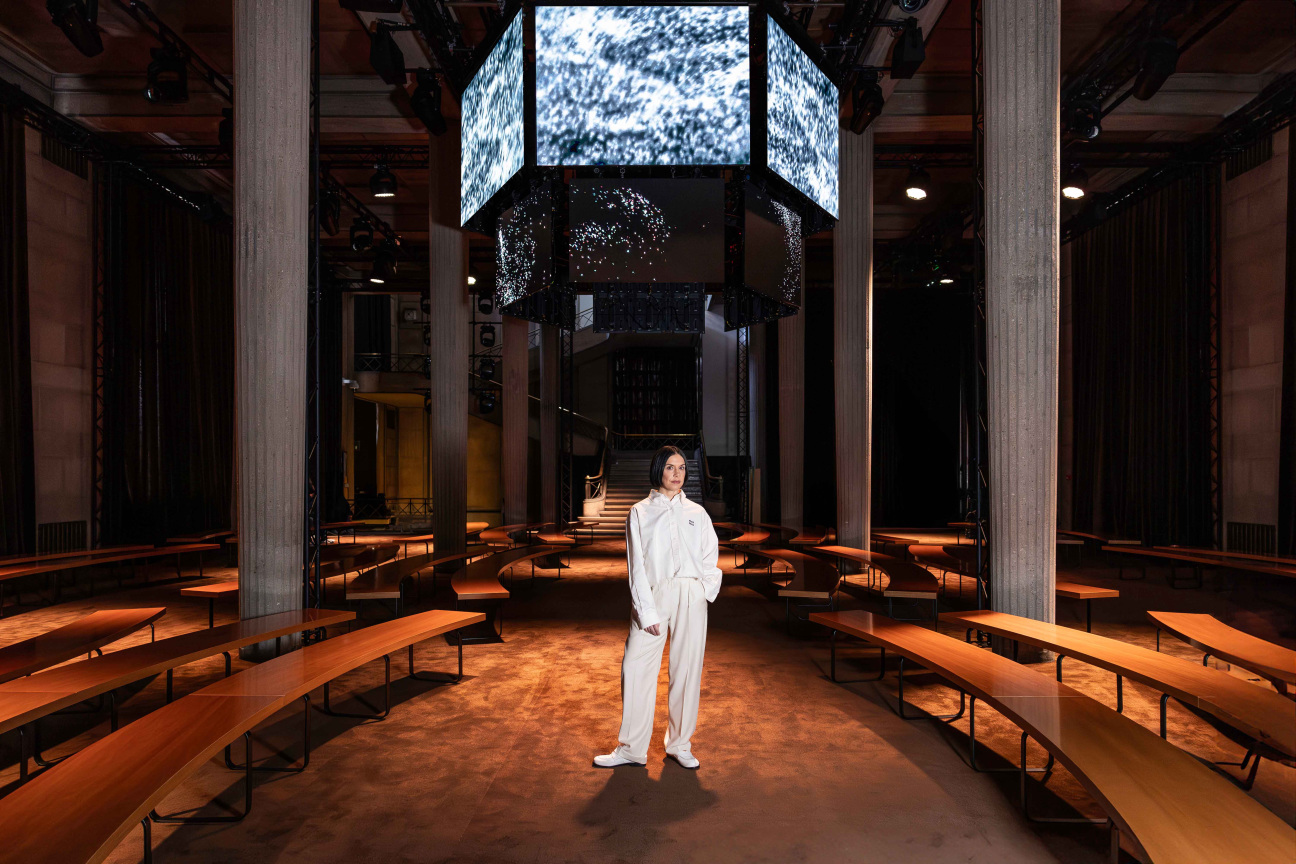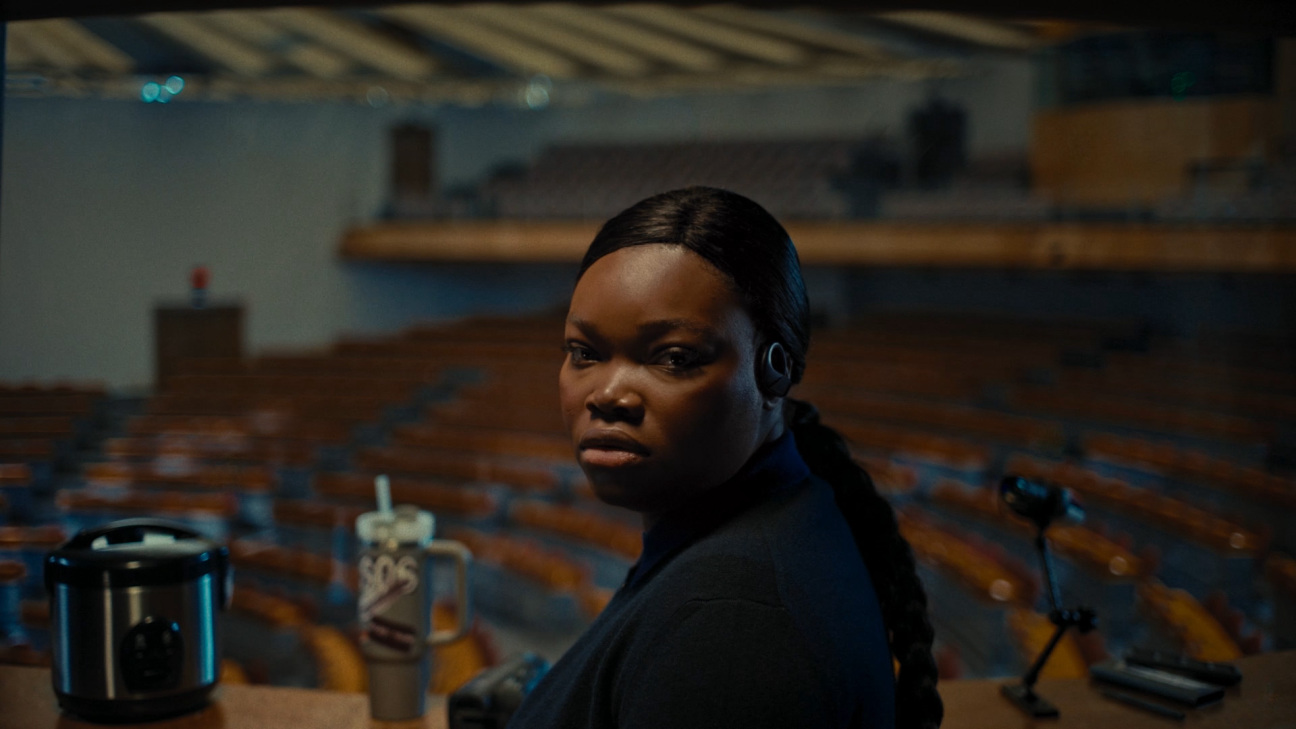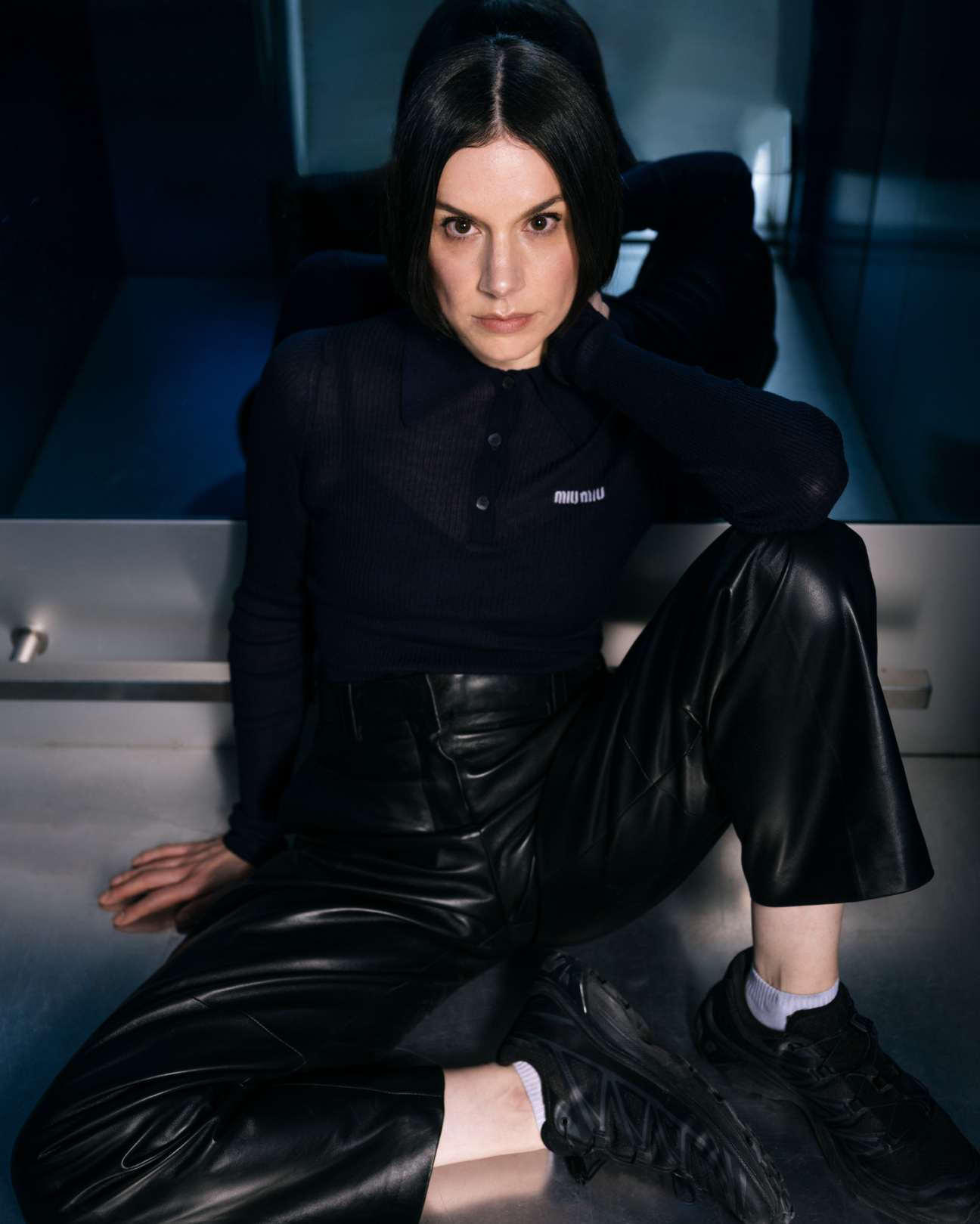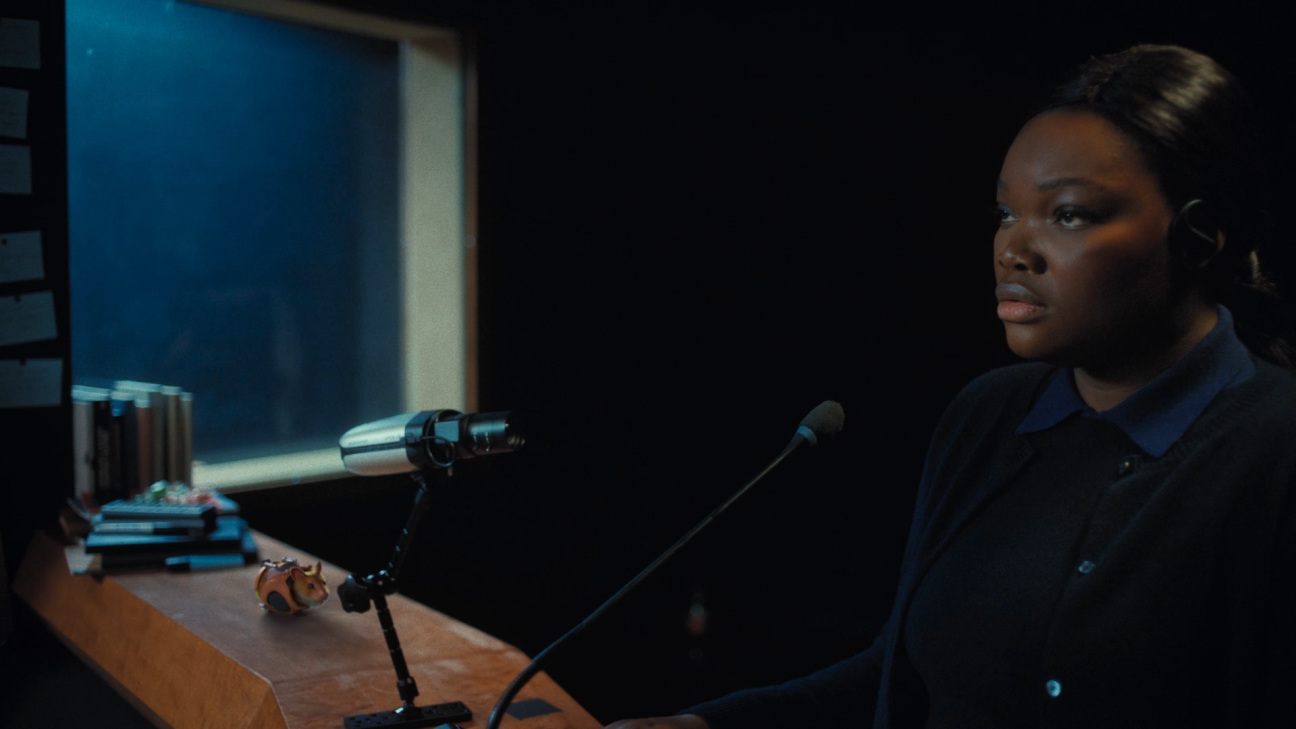
When guests of Miu Miu walked into Paris’s Palais d’Iéna—a pillared, concrete colossus that’s hosted the Italian brand’s runway shows for over a decade—earlier this afternoon, they were met with dozens of projections of actor Guslagie Malanda painting her nails, sipping from a Stanley cup, and working with a slew of devices, among them a rice cooker and a camera. As the last stragglers found their places on the subtly horseshoe-shaped benches that lined the space, the screens panned to an environment with kindred seating: a parliament.
In the ensuing 90-second film, however, the parliament was no longer. It had been repurposed as a data processing center. In this Miu Miu-verse, Malanda—a curator and the breakout star of last year’s Saint Omer—plays Reception, one of the last surviving human translators. A storage apocalypse has occurred, resulting in the wiping of digital memory, and Reception is in the business of imprinting peoples’ memories into the machines, creating a linguistic seed bank. A few seconds in, she receives the transmission of a woman’s recollection in Irish Gaelic, translating it live into French as a machine spits it out in English. Amid this trilateral exchange, Reception’s own memory breaks loose, a wave of butterflies migrating across the digital chandeliers that punctuate the Iéna space. As they fluttered by, the runway show commenced.

Sitting in the front row was Cécile B. Evans. The Belgian-American artist—known for their dense close-readings of power, its dissemination, and its subversion—choreographed this transmediatic ballet over the past two months, but today was their first time seeing it interact with Miuccia Prada’s latest collection. The isolation of each project was no accident, and Evans sees this compartmentalization as freeing. “I haven’t had to stretch outside of myself,” they told CULTURED a few days before the show. “We both just have to trust there’s going to be this alchemy that happens.”
Which isn’t to say there’s been no dialogue between the two branches. Evans has declined collaborations with fashion houses in the past and initially approached this one with their guard up: “Coming into it, I thought, I’m going to really have to defend the project. But I was never asked to compromise. They know so much about the work, and I’ve had so much contact with them—to some extent more than I will with a museum director.” The artist, who lives in a northern suburb of Paris, attributes this attention to Prada herself, “who pushes people to be more radical.”

Evans took partial inspiration for the character of Reception in one of the designer’s bolder entries, an archival look from a 2011 collection. Malanda dubbed the aesthetic “future Black Amish,” and the brand worked details from the garments into her custom-made costume. Beyond Miu Miu’s own database, the artist’s research into memory and its transmission prompted conversations with frequent collaborators, working translators, and even their family doctor, who connected them with practitioners specialized in the field. “Everyone kept saying that when you forget something it doesn't disappear,” they recall. “It doesn't get stored in one location in your mind. It's not that it's not there, it's just that you can't access it. And I was like, ‘Oh my god, it's like a file. When you delete a file, it doesn't disappear. You just don't have the language to access it anymore.’”

That vestige is at the crux of Evans’s Miu Miu commission, with which they’ve joined the ranks of Meriem Bennani, Sophia Al-Maria, and Shuang Li, who have all collaborated with the house in the past. The artist sees the human body’s retention of memory as a sort of Ariadne’s thread, one that will lead us to feel more ownership of the technological accouterments we often entrust it to. “Since the inception of the Internet, one of the biggest mistakes is that we haven't taken complete agency over our own memories,” they reason. “‘These are mine. I carry them with me every single day.’ We feel that way about a watch. But we just abandon our phones. It's like, ‘No, these are our things.’”
During our conversation, Evans traced their own connection to Miu Miu back to their adolescence. Before they studied acting at NYU, before their work made its way into the collections of the Centre Pompidou and the Whitney Museum, before they adapted Giselle into an ecological thriller, Evans was a teenager doodling the brand’s logo in their diary. But even then the file was corrupted. “I spelled it wrong,” they remember with a laugh. “It’s always been Mui Mui.”










 in your life?
in your life?

